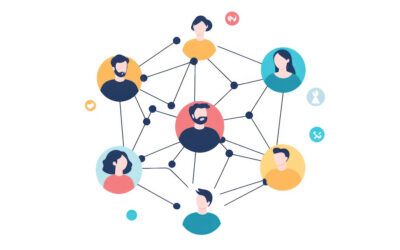It doesn’t make any sense.
Your customer likes you, you’ve done business together in the past, and nothing new was mentioned during your last call. Yet you just received word that “out of the blue” they decided to go with someone else.
It’s disheartening to lose a deal you were certain you’d win. While no article can diagnose what happened in your specific situation, we can give you the top reasons salespeople have to mark opportunities “closed-lost” in the CRM.
Misaligned Values
Value propositions need to be challenged on a regular basis these days. Your customers’ worlds are constantly changing given the record inflation, supply chain disruption, employment challenges, and the war in Ukraine — which all came on the heels of a worldwide pandemic.
What mattered most to your customers six months ago, might not be what’s most important today. In fact, what mattered most last week might not be what matters today.
I conducted some surveys and interviews for a building supply company to figure out how they could best differentiate themself from the competition. I asked salespeople “why do customers do business with you”. Their overwhelming response was because of the “relationships” they have with customers.
I then asked a select group of their ideal customers why they did business with the company, and “relationships” wasn’t even in the top five. They cited order accuracy, price, on-time performance, seller accessibility, and product availability.
The salespeople weren’t aligned with what the customer valued most.
Here’s the important thing — value is not static. The only way the salespeople will know if order accuracy is still most important to those customers is if they ask. Chances are good they might find product availability, or on-time delivery are the new hot buttons.
Trying to be Liked
Before the information age, customers had no choice but to rely on salespeople for their information. Everyone believed that buyers would do business with people they knew, liked, and trusted.
Today’s buyers can get nearly all the information they want online. They don’t need to have strong relationships with salespeople anymore.
B2B buying habits are evolving to closely imitate those of B2C buyers. What is your relationship like with your banker, travel agent, car dealer, or local store owners? Do you have one, or can you bypass these people with mobile apps and online ordering?
You don’t need to be liked, you need to be trusted. You accomplish that by providing value.
Not Understanding The Value Formula
In my new book Agile & Resilient: Sales Leadership for the New Normal, my co-author Russ Sharer and I discuss The Value Formula.

Simply put, Value can be calculated as Perceived Benefits divided by Perceived Price and Perceived Emotional Cost. If your prospects believe the benefits outweigh the price and emotional cost, they’ll buy.
If you are losing deals you think you should win, I can guarantee your problem lies in this equation. Either you wrongly assumed the customer understood the benefits, or perhaps you didn’t ask enough questions to uncover the true emotional cost (which could be anything from the pain of leaving an existing vendor relationship, to the hassle involved in switching vendors).
Failing to Understand Behavior Styles
In our IMPACT training, we spend an entire session explaining the four DISC behavior styles.
Generally speaking, people are either high energy, or reserved energy, and they are either formal and results driven, or informal and relationship driven.
Learning about people’s behavior styles will allow you to adjust how you approach people. You’ll be able to identify which buyers want to hear about your day, and which ones want just the facts.
Adapting to your customer’s behavior style helps facilitate trust and effective communication, while also minimizing unnecessary frustration for both of you. Failing to understand this can create an emotional cost of doing business with you, that you may not even be aware of.
Deviating From Your Fundamentals
The tools sellers use to prospect for customers, conduct meetings, overcome objections, and close deals has dramatically changed over the past several years. That change began long before Covid forced everyone to conduct business virtually.
It is of critical importance that sellers understand your tools are not your process.
For example, a few years ago your process may have been to review the proposal with the buyer in person. Circumstances may prevent you from meeting with the buyer in person, but you should not allow technology to alter your process by emailing the proposal instead. Instead, use technology to strengthen your process.
Learn how to conduct a virtual meeting switching between gallery view and presentation mode so you can still answer any questions and handle any objections as they come up.
Don’t Get Out-Sold!
To put it frankly, if your competition is beating you it means your salespeople are being out-sold.
If you have great relationships with customers but are still losing business, something is missing in your sales process. Based on current market insights and our own research, chances are good salespeople are failing to connect the dots so customers understand how their current problems are solved by your products.
Our award-winning IMPACT Selling® training will increase strategic alignment between your salespeople and their customers. Throughout six sessions, sellers will learn how to position themselves as strategic partners to their clients, professionally ask tough questions, fully understand their customer’s behavior and motivations, handle price negotiations, and close with confidence.




